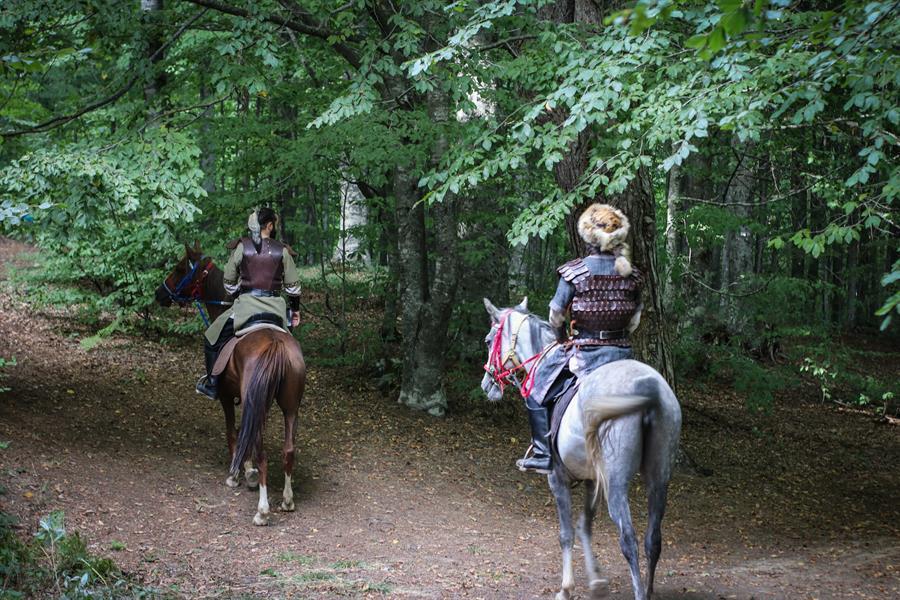
An 86-kilometer historical migration route between the western province of Kütahya’s Domaniç, which was in use as a summer cottage during the establishment of the Ottoman Empire, and the Söğüt district of Bilecik, where Turkish tribes resided in winter at the time, will be brought into tourism.
The route, called Domaniç Migration Road, starts from the grave of Hayme Ana, the grandmother of the founder of the Ottoman Empire, Osman Gazi, in Çarşamba village.
Among the natural and historical spots that can be seen on the route are Ebe Pine grove, Mızık Pine natural monument, Karagöl and Kızılsaray plateaus, Ilıcaksu historical poplar tree and historical Berçin tower.
Ottomans were a small tribe that extended from the Kayı branch of the Seljuk Turks, who settled Anatolia in the 12th and 13th centuries. By 1300, Osman Gazi had become the leader of a group of Turkish pastoral tribes through which he ruled over a small territory around the town of Söğüt in northwestern Anatolia.
It became an empire by taking over the neighboring city of Bursa in a short time, but despite the different conditions brought by the new circumstances, Söğüt and Domaniç continued to have an important place in the eyes of the state and the public.
The route, where the Kayı tribe used to migrate from Domaniç to Söğüt every year and the footprints of the Ottoman Empire, offers the opportunity to see Domaniç’s unique nature and hidden forest beauties as well as various historical monuments.
The project aims to re-functionalize the route used during the establishment of the Ottoman Empire, according to Hasan Keskin, a forest manager in Kütahya province.
“We aim to enable citizens to see the beauties on this migration route to be in touch with nature and to benefit from these pleasures,” Keskin said, adding that the road offers both historical and natural attractions.
“There are settlements from the old Ottoman period, along with the paths used in that period, picnic areas that can be accommodated in the forest and camping areas,” Keskin noted.
While a part of the project is completed and made available to the public, the rest of the areas will be put into service in the coming months.
There is also the opportunity to reside in caravan parks, specially prepared for tourists who will choose the region for trekking and hiking.
Keskin added that the migration route is among the most beautiful places in the country that people can visit.